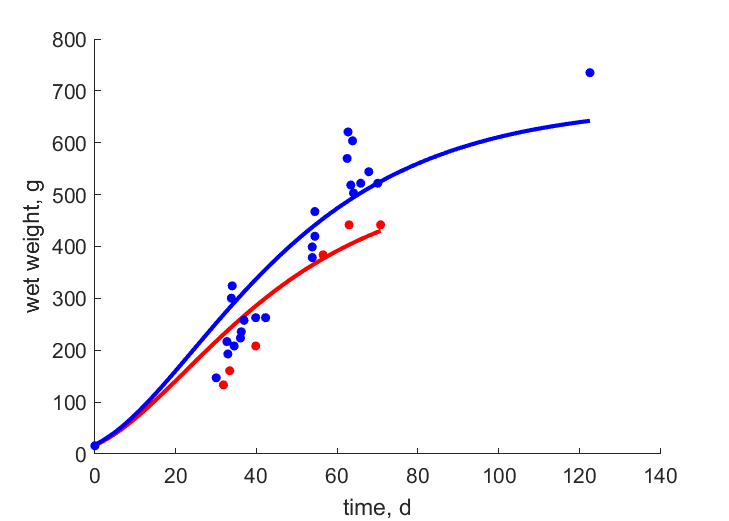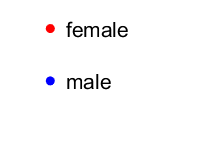Predictions & Data for this entry
| Model: std | climate: Cfa, Dfa | migrate: | phylum: |
| COMPLETE = 2.5 | ecozone: THn | food: bxCi, biHs | class: |
| MRE = 0.096 | habitat: 0iTg | gender: Dg | order: |
| SMSE = 0.020 | embryo: Tnsf | reprod: O | family: |
Zero-variate data
| Data | Observed | Predicted | (RE) | Unit | Description | Reference |
|---|---|---|---|---|---|---|
| ab | 23 | 18.26 | (0.2062) | d | age at birth | AnAge |
| tx | 1 | 0.9983 | (0.001653) | d | time since birth at fledging | PitmHage2005 |
| tp | 70 | 69.36 | (0.009125) | d | time since birth at puberty | guess |
| tR | 365 | 365 | ( 0) | d | time since birth at 1st brood | AnAge |
| am | 4928 | 4912 | (0.003183) | d | life span | AnAge |
| Wwb | 15.5 | 17.48 | (0.1276) | g | wet weight at birth | PitmHage2005 |
| Wwi | 719 | 659.1 | (0.08336) | g | ultimate wet weight | PitmHage2005 |
| Wwim | 789 | 834 | (0.05706) | g | ultimate wet weight for male | PitmHage2005 |
| Ri | 0.03014 | 0.03001 | (0.004121) | #/d | maximum reprod rate | AnAge |
Uni- and bivariate data
| Data | Figure | Independent variable | Dependent variable | (RE) | Reference |
|---|---|---|---|---|---|
| tW_f |   | time | wet weight | (0.176) | PitmHage2005 |
| tW_m |   | time | wet weight | (0.1495) | PitmHage2005 |
Pseudo-data at Tref = 20°C
| Data | Generalised animal | Tympanuchus pallidicinctus | Unit | Description |
|---|---|---|---|---|
| v | 0.02 | 0.04944 | cm/d | energy conductance |
| p_M | 18 | 920.3 | J/d.cm^3 | vol-spec som maint |
| k_J | 0.002 | 0.03765 | 1/d | maturity maint rate coefficient |
| k | 0.3 | 0.2999 | - | maintenance ratio |
| kap | 0.8 | 0.9537 | - | allocation fraction to soma |
| kap_G | 0.8 | 0.7989 | - | growth efficiency |
| kap_R | 0.95 | 0.95 | - | reproduction efficiency |
Discussion
- Males are assumed to differ from females by {p_Am} only
- Body temerature is guessed
- mod_1: males have equal state variables at b, compared to females
- mod_1: Pseudo-data point k is used, rather than k_J; Data set tp and parameter t_R are added, the latter replacing clutch interval t_N. Postnatal T is based on PrinPres1991, see get_T_Aves. See further the revision page, theme puberty
Bibliography